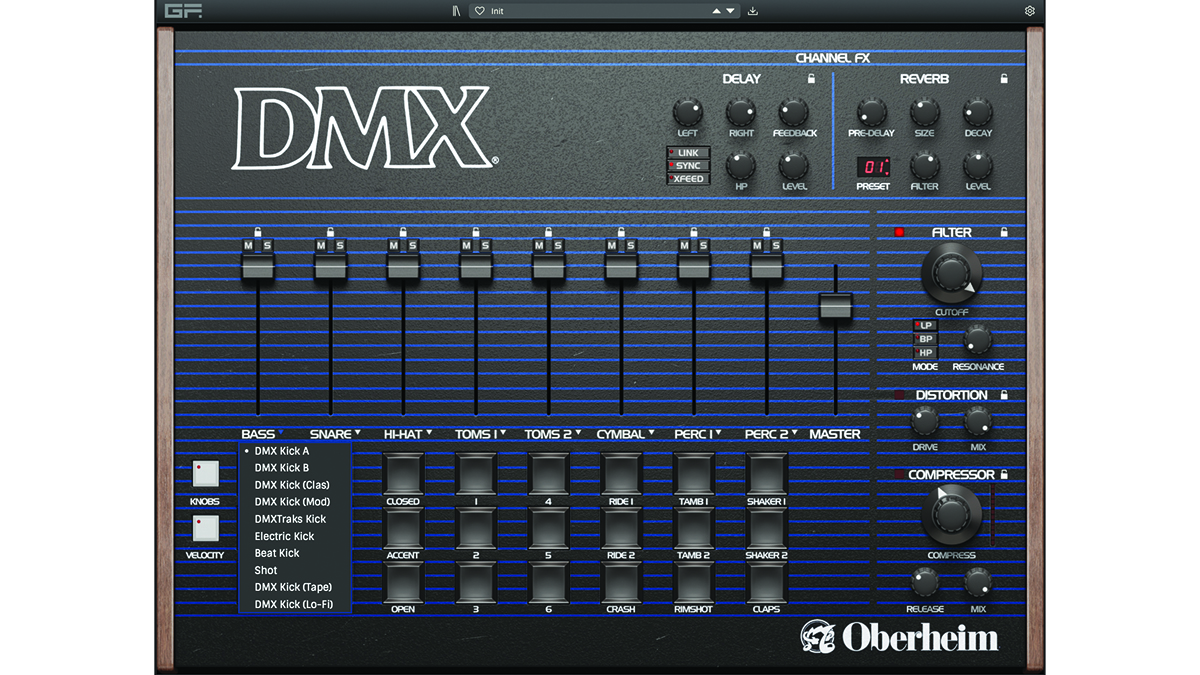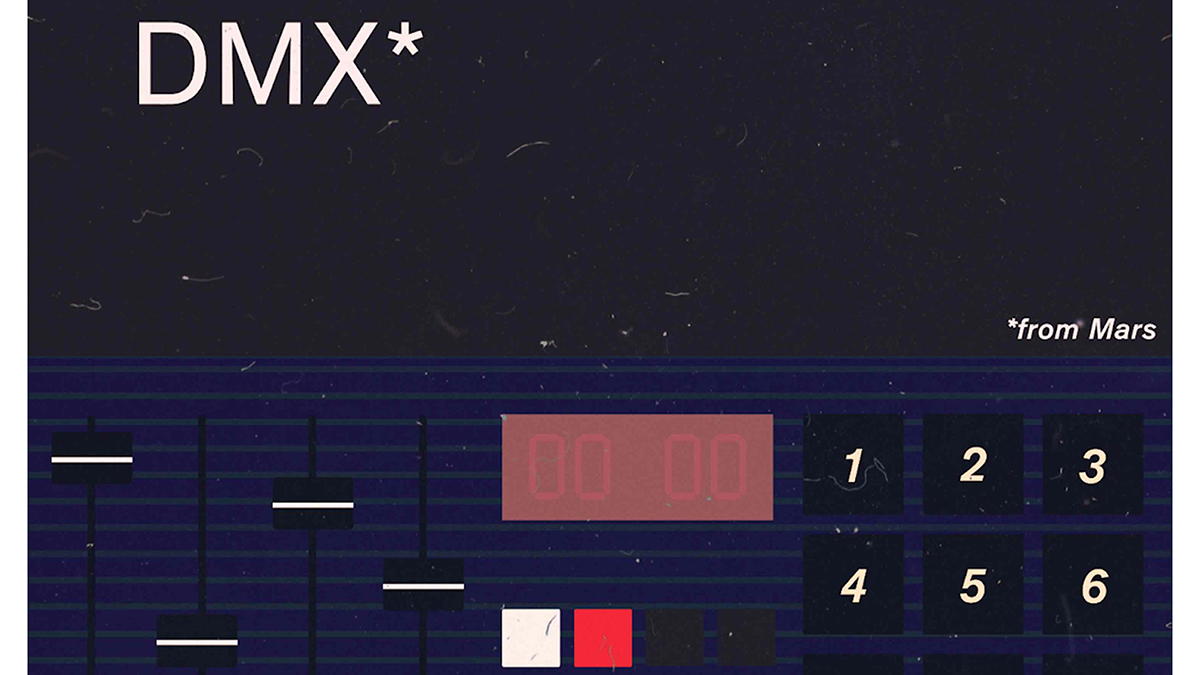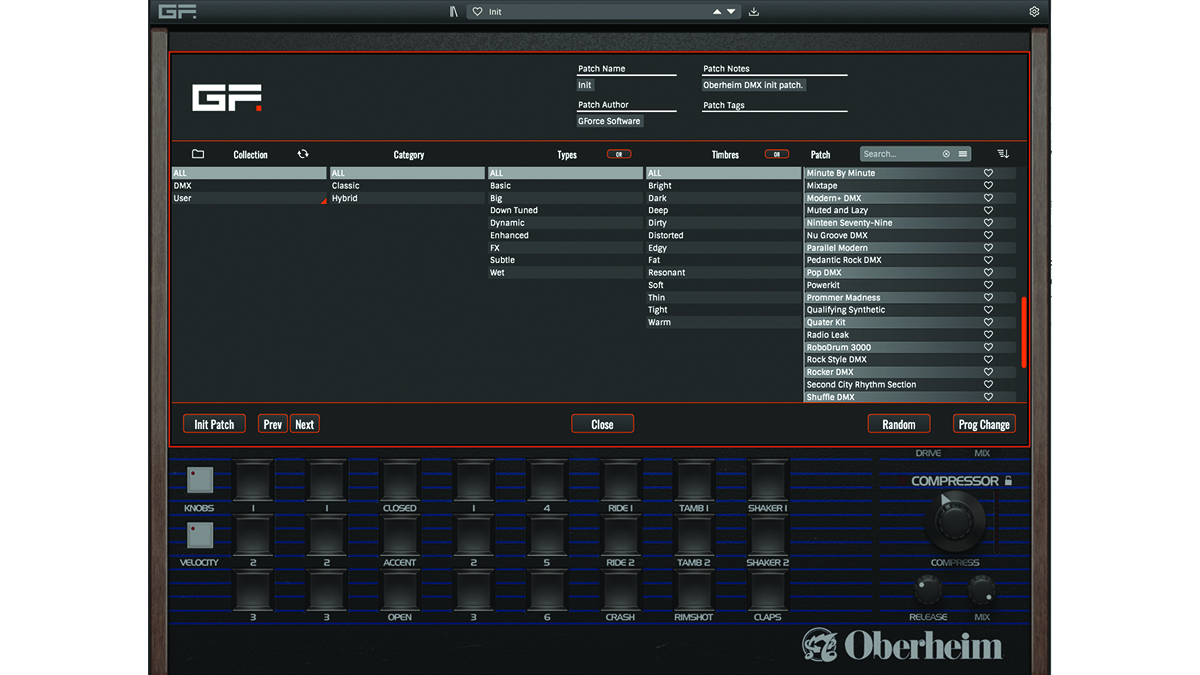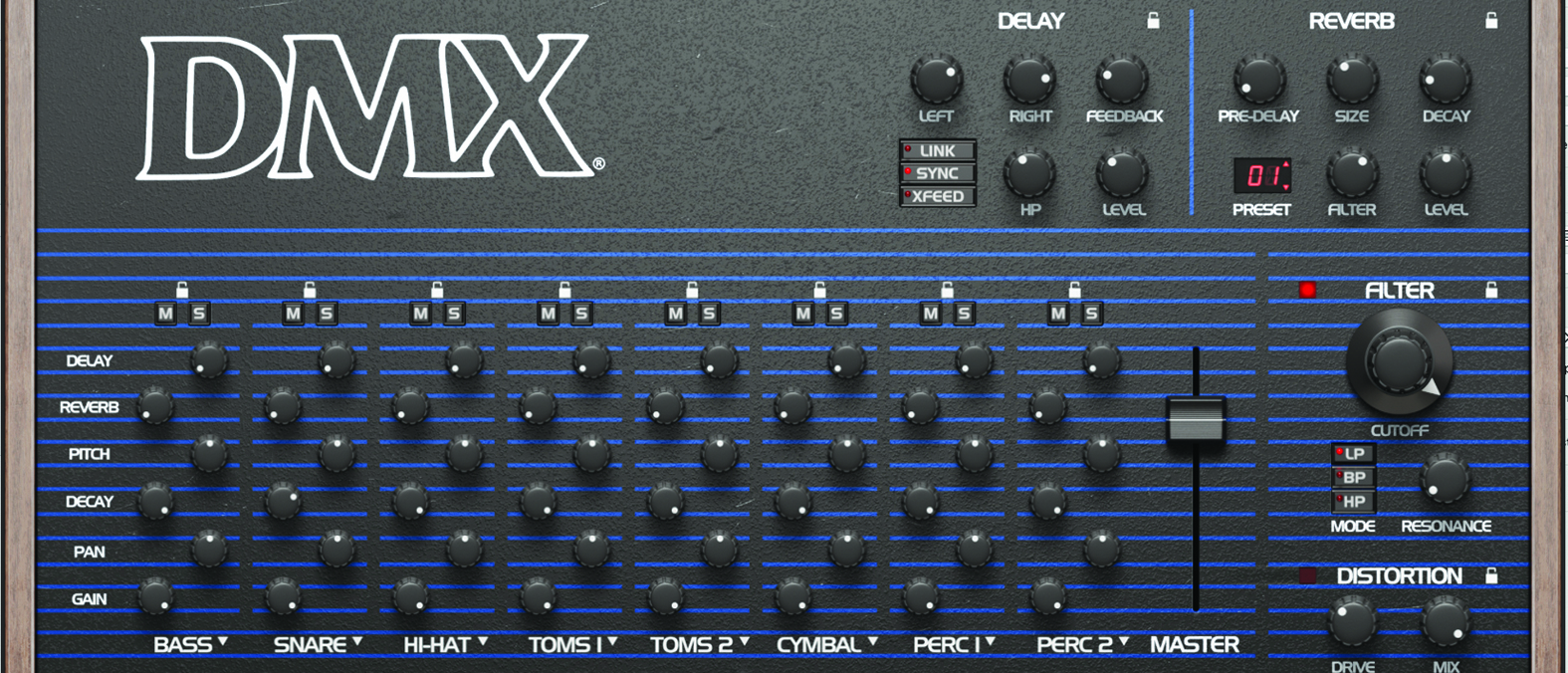MusicRadar Verdict
The DMX has been beautifully engineered in software by GForce, providing the original sounds alongside many useful additions, and a host of easy editing options and FX capabilities.
Pros
- +
Associated OB sounds also included.
- +
Onboard FX processing, including a SEM filter.
- +
Full MIDI CC control of parameters.
- +
Easy access to basic editing features.
Cons
- -
No onboard sequencer for pattern creation.
MusicRadar's got your back
GForce Software Oberheim DMX review: What is it?
macOS: 10.15.x or above, Intel or Apple Silicon Mac
Windows: 7 and above, 2GHz CPU with 2GB RAM
Format: AudioUnit, AAX, VST and VST3
Buy at Plugin Boutique
Drum machine sounds are a most bizarre thing. The fat Linn Drum snare was recorded in Roger Linn’s wardrobe. The iconic 909 hi-hat was a physical hi-hat, owned by one of the machine’s designers, and recorded at Roland HQ, while the clap from Oberheim’s classic DMX was recorded by four Oberheim employees, in their office. No wardrobe required!
Where earlier analogue machines were a bit of a commercial flop, it was the emergence of digital machines, such as the Linn Drum and Oberheim DMX, that changed the drum machine landscape forever. Both released in 1980, it was their digital makeup and capacity to capture and store drum sounds that actually sounded like the sounds that they were intended to be, that made the difference, albeit with only 8-bit sampling technology.
Fast forward over 40 years and you could be tempted to buy an aging DMX on the second hand market, with all the problems that might follow with a vintage machine. Or you could turn to reincarnation-evangelist GForce Software, who has created the iconic DMX drum machine in software, in collaboration with Oberheim. Further to that, as it’s software, it works perfectly and is very affordably priced…

GForce Software Oberheim DMX review: Performance and verdict
Despite being software and a 2D render on screen, the presentation could not be better. Resplendent in the iconic black and blue stripes, the resizeable interface reflects the mottled effect of the original.

• Samples From Mars DMX From Mars
The sampling specialists give the DMX their unique treatment.
• UVI Beatbox Anthology 2
The DMX forms part of the Beatbox Anthology 2 suite, which can be enjoyed as a package.
At first sight, it looks identical, with the three buttons at the bottom of the interface to trigger each sound and faders to adjust the instrument levels. Being software, there’s a lot more under the hood though; selecting the ‘Knobs’ button reveals the next layer. Six small pots allow control of sample pitch and decay, stereo panning and gain, with the remaining two pots sending the selected instrument in the direction of the onboard delay or reverb.
If we take a moment to consider the sounds themselves, they are truly iconic. For many, they are preferential to the Linn sounds, although the similarities are obvious. There was an updated model of DMX, released in 1983, as well as a stripped down DX drum machine. GForce has included all of the sounds from these machines as well as other associated machines, such as the Drum Traks. That makes a tally of 288 entirely authentic sounds, all with basic editing provision. This means that you can easily create one of the most obvious and iconic edits, by dropping of pitch of either the rim or clap sounds. Very classic!

All the beats!
One appealing element of this software is its completeness. In the ’80s, sounds were stored and interchanged using EPROM removable voice cards. This allowed the swapping of sounds, albeit through the use of slightly clunky hardware. This also meant, that throughout the life of the DMX, sounds could be mutated to fulfil the sonic requirements of each revision. The inclusion of all of these revised sounds, along with related sounds from other machines, means you can mix and match what you require, creating a generational hybrid of a DMX machine.
Want all the hottest music and gear news, reviews, deals, features and more, direct to your inbox? Sign up here.
GForce has also included samples, with degrees of processing, such as with Tape or Lo-Fi descriptions. If these sounds are coupled with the very useful backend processing, from their legendary SEM filter design, distortion and compressor, the sonic capabilities of DMX are more applicable to production now, than ever before.
Use this way
GForce has a successful and ongoing relationship with Oberheim, and it is great to see the presence of their phenomenal SEM filter on the backend of the DMX output. This is accompanied by distortion and compression, both of which serve the software’s main output. The reverb and delay elements are flexible, through the use of dedicated send pots, previously mentioned by pressing the Knob button. As all of the controls respond to MIDI CC, any chaotic and simultaneous operations can be bought under control from within the DAW.
This reinterpretation in software sounds truly exceptional. All of the sounds garner the immediacy of the original machine, with depth and detailing which is second to none. Our only regret is that there is no on-board sequencer. GForce has provided MIDI files to represent familiar and iconic patterns, but these have to be imported within a DAW. With the allure of the standalone application, this is an enormous shame, as it would have been so nice to simply program patterns in the original way. Placing this to one side though, the DMX has Oberheim running through its samples, like a stick of rock!
MusicRadar verdict: The DMX has been beautifully engineered in software by GForce, providing the original sounds alongside many useful additions, and a host of easy editing options and FX capabilities.
GForce Software Oberheim DMX review: Hands-on demos
GForce Software
Nu-Trix The Synth Guy
Vulture Culture
Elektronick Musick
GForce Software Oberheim DMX review: Specifications
- macOS 10.13 or above. Intel & Apple Silicon Native. Standalone Application, AudioUnit, AAX, VST2, VST3.
- Windows 7 and above. Standalone Application, VST, VST3, AAX.
- CONTACT: GForce Software
Roland Schmidt is a professional programmer, sound designer and producer, who has worked in collaboration with a number of successful production teams over the last 25 years. He can also be found delivering regular and key-note lectures on the use of hardware/software synthesisers and production, at various higher educational institutions throughout the UK





